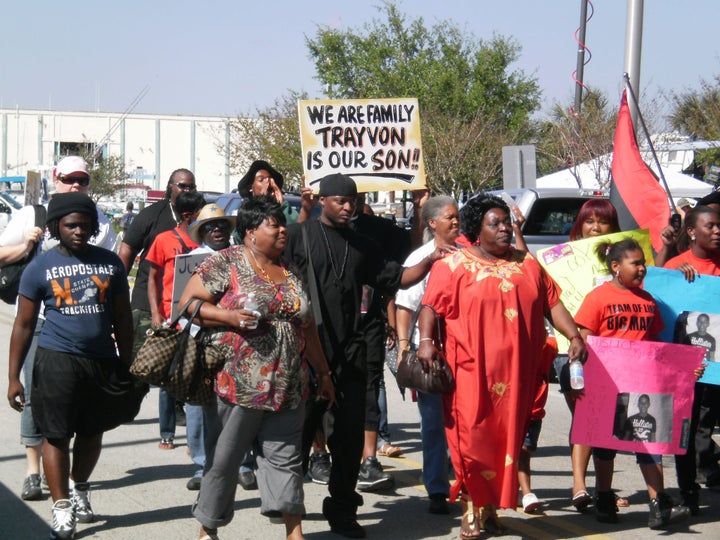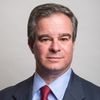
The violent confrontation happened in a Southern state with a long history of racial animus. By the time the police arrived, a teenager lay dead on the ground. The shooter had attempted to detain the minority youth as a "suspicious person" before killing him with a point-blank gun blast to the chest. He would eventually walk free despite substantial evidence indicating he was guilty of murder.
The similarities to the February 26th killing of 17-year-old Trayvon Martin by Florida concealed handgun permit holder George Zimmerman are undeniable. But the incident described above is the killing of Ramón Casiano by Harlon Carter, who transformed the National Rifle Association (NRA) into the radical right wing organization we know today.
Carter is the man who orchestrated the infamous "Cincinnati Revolt" at the NRA's national convention in 1977. NRA hardliners were unhappy that the "Old Guard" leadership wanted to move the organization's headquarters to Colorado and focus on hunting and shooting sports. Led by Carter (who had served as a board member, vice president and president of the NRA), they were able to seize control of the organization using aggressive on-site advocacy and shrewd parliamentary tactics. Carter, as the organization's new leader, decided to keep the organization in Washington, D.C. and focus on politics and gun policy. Soon, the NRA would develop a reputation as a no-compromise outfit that embraced extreme positions on gun violence prevention laws and the Second Amendment.
Carter arrived at his new, high-profile position with some serious personal baggage. According to Under Fire: The NRA and the Battle for Gun Control by Osha Gray Davidson, a 17-year-old Carter shot and killed 15-year-old Ramón Casiano in Laredo, Texas, on March 3, 1931. After returning home from school that day, Carter was told by his mother that there were three Latino youths loitering near the family's property. Carter left his house, shotgun in tow, to confront the alleged loiterers. After finding Casiano and his two companions at a nearby swimming hole, Carter pointed his shotgun at them and ordered them to come with him. Casiano refused, pulled out a knife, and asked Carter if he would like to fight. Carter then pointed the shotgun at Casiano. Casiano laughed and brushed the gun aside while taking a step back. Carter asked Casiano, "You don't think I'd use it?" and then fatally shot him in the chest.
As detailed in National Rifle Association: Money, Firepower & Fear by Violence Policy Center executive director Josh Sugarmann, Carter claimed self-defense during his trial, but the presiding judge instructed the jury, "There is no evidence that defendant had any lawful authority to require deceased to go to his house for questioning, and if defendant was trying to make deceased go there for that purpose at the time of the killing, he was acting without authority of law, and the law of self-defense does not apply." Carter was convicted of murder without malice aforethought (a crime similar to second-degree murder) and sentenced to three years in prison. Subsequently, Carter successfully appealed his conviction, with an appeals court determining that the trial court failed "to submit to the jury appropriate instructions upon the law of self-defense."
The incident remained a secret in Carter's past until it was reported in the media in 1981. Carter initially denied that he had killed Casiano, calling the media's reporting "truly outrageous." Sugarmann wrote that Carter falsely claimed that the shooting took place on his property. He also fibbed that the prosecutor at his trial was the judge's son.
The appeals court that exonerated Carter would have made modern-day proponents of the NRA's "Stand Your Ground" law proud. Over 80 years later, our nation now waits to see if our country's legal system will again protect an armed man who elected to take a young life rather than simply walk away.
There is little doubt that Carter himself would have been a vigorous champion of "Stand Your Ground" (he died in 1991 prior to the advent of the law). He made it clear that his solution to gun violence in America was arming everyone and letting the "good guys" shoot it out with the undesirable elements of our society. In 1975, Carter was asked if he would "rather allow those convicted violent felons, mentally deranged people, violently addicted to narcotics people to have guns, rather than to have the screening process?" An opponent of the 1968 Gun Control Act -- which created categories of prohibited firearms purchasers -- Carter responded that arming dangerous individuals was "a price we pay for freedom" in America.
Nor is Carter the only member of NRA leadership to tell armed Americans that it is their duty to act as judge, jury and executioner on our nation's streets:
• NRA Board Member Roy Innis offered to fund the legal defense of the then-fugitive "Death Wish" gunman Bernard Goetz, a white man who shot four black teenagers that he accused of trying rob him of $5 on a subway train on December 22, 1984. Innis called Goetz "the avenger for all of us" and proposed that a "volunteer peace officer" force of armed civilians roam the streets of New York City. "After enough criminals get blasted, they will conclude that crime does not pay," he said. "Some black man ought to have done what [Goetz] did long before. I wish it had been me."
• In a 1999 newsletter, NRA Board Member Jeff Cooper shared a story from a friend who pulled a handgun on four African-American men because he saw them wearing "ski masks" on Halloween. Cooper wrote: "It is delightful to contemplate a circumstance in which the right man was there at the right time. We do not read of such situations often because they are simply not newsworthy. There is nothing to wring our hands about." Cooper's friend concluded his story thusly: "Perhaps they did nothing else criminal that night, or perhaps they did. I will never know. But I'm sure that before they decide to approach another old, broken−down, potential victim, they may remember what the muzzle of my 45 looked like as it was pointed at their heads."
• During a featured speech at the 2005 NRA Convention, NRA Board Member Ted Nugent told the audience, "Remember the Alamo! Shoot 'em! To show you how radical I am, I want carjackers dead. I want rapists dead. I want burglars dead. I want child molesters dead. I want the bad guys dead. No court case. No parole. No early release. I want 'em dead. Get a gun and when they attack you, shoot 'em."
Nugent's comments were made at the same time that NRA lobbyist Marion Hammer was pushing Florida's "Stand Your Ground" law -- which has been implicated in the death of Trayvon Martin and many other unarmed Floridians -- through that state's legislature. If Harlon Carter, Ted Nugent, and other NRA peddlers of vigilantism wanted a poster boy for their ideas about justice and the "rule of law," they have certainly found one in George Zimmerman.
This is the seventh in a series of articles I have written profiling the rogues gallery that makes up the leadership of the National Rifle Association (NRA). Learn more at www.MeetTheNRA.org.
